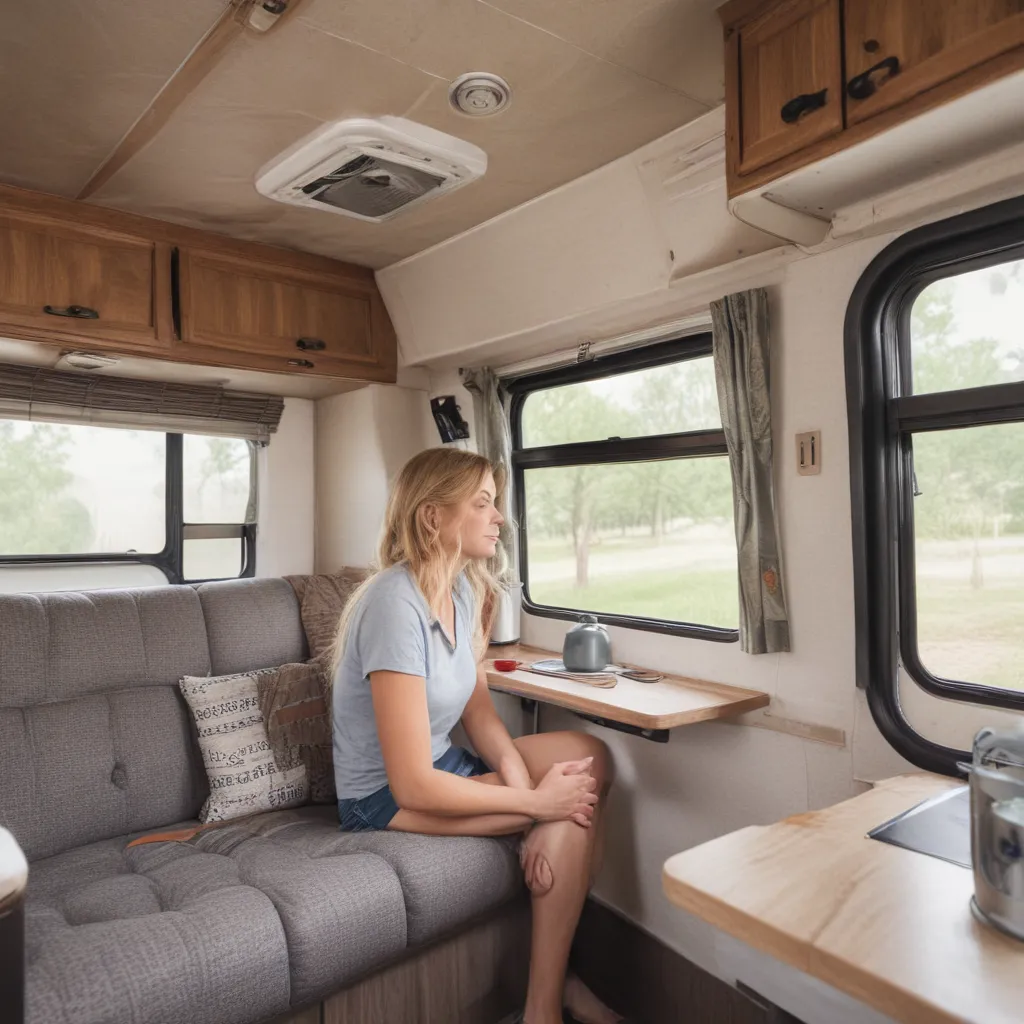
The Invisible Foe: Understanding Indoor Air Quality Challenges in RVs
Ah, the open road – the wind in your hair, the sun on your face, and the sweet scent of freedom wafting through your RV. But wait, what’s that strange smell lingering in the air? Could it be the remnants of last night’s campfire, or something more sinister lurking within the confines of your mobile home? As an RV enthusiast and proud owner of a fleet of well-maintained vehicles, I can attest to the importance of maintaining the indoor air quality (IAQ) within these cozy little abodes on wheels.
You see, RVs are like tiny, self-contained ecosystems, and the air quality inside can be quite different from the great outdoors. From off-gassing materials to poor ventilation, a myriad of factors can contribute to less-than-ideal IAQ. And let me tell you, breathing in stale, polluted air is no way to enjoy the open road. That’s why I’ve made it my mission to share my expertise and help fellow RV owners breathe a little easier.
Identifying the Culprits: Common Indoor Air Pollutants in RVs
Let’s start by taking a closer look at the potential culprits lurking within your RV’s cozy confines. You might be surprised to learn that the very materials used to construct and furnish these mobile homes can be a major source of indoor air pollution. Volatile organic compounds (VOCs), such as formaldehyde, can be emitted from things like plywood, adhesives, and certain types of insulation. And don’t even get me started on the offgassing from that brand-new RV smell – it’s enough to make your head spin!
But wait, there’s more! RVs are also susceptible to mold and mildew growth, especially in damp areas like the bathroom or kitchen. And let’s not forget about the buildup of carbon monoxide from the engine or faulty appliances. Yikes, it’s enough to make you want to roll up the windows and never venture out again, am I right?
Clearing the Air: Strategies for Improving IAQ in Your RV
Fear not, my fellow RV enthusiasts! There are plenty of strategies and solutions to help you breathe easy in your home on wheels. The first step is to be proactive and regularly inspect your RV for any potential air quality issues. Look for signs of mold, musty odors, or malfunctioning appliances, and address them right away. Remember, a stitch in time saves nine, as they say.
Next, consider upgrading your RV’s ventilation system. Proper airflow is key to maintaining good IAQ, so make sure your fans, vents, and windows are in tip-top shape. And while you’re at it, consider investing in a high-quality air purifier or filter to help remove those pesky airborne pollutants.
Speaking of upgrades, have you ever thought about replacing some of the offgassing materials in your RV with more eco-friendly alternatives? From formaldehyde-free cabinetry to natural, low-VOC finishes, there are plenty of options to help create a healthier indoor environment.
And let’s not forget the importance of regular cleaning and maintenance. Dust, dirt, and pet dander can all contribute to poor IAQ, so make sure to give your RV a thorough once-over on a regular basis. And don’t be afraid to crack open those windows and let in some fresh, rejuvenating air – just be mindful of the weather and any potential outdoor pollutants.
Overcoming the Challenges: Real-World IAQ Improvements in RVs
Now, I know what you’re thinking – all of this sounds great in theory, but how does it translate to the real world? Well, let me share a few inspiring stories of RV owners who have tackled their IAQ challenges head-on.
Take Sarah, for example. She and her family had been struggling with persistent respiratory issues while on the road, and they suspected it had something to do with the air quality in their RV. After doing some research, they decided to invest in a high-quality air purifier and made sure to keep their windows open as much as possible during their travels. The results were nothing short of miraculous – Sarah reported that the whole family was breathing easier, and they no longer experienced the uncomfortable symptoms they had dealt with before.
Or how about the case of Tom and Cindy? This adventurous couple had recently upgraded to a newer RV, only to be met with a strong chemical smell that just wouldn’t go away. Determined to get to the bottom of the issue, they reached out to a specialist who conducted a thorough inspection. Turns out, the materials used in the RV’s construction were off-gassing at alarming rates, contributing to the poor indoor air quality. Armed with this knowledge, Tom and Cindy worked with the manufacturer to replace the offending materials, and now they’re enjoying their RV adventures without a care in the world.
These are just a few examples of the real-world success stories I’ve come across in my journey to help fellow RV owners breathe easy. And let me tell you, the sense of relief and renewed enjoyment these folks have experienced is truly priceless.
Breathe Easy, My Friends: Maintaining Optimal IAQ in Your RV
So, there you have it – a comprehensive guide to improving indoor air quality in your RV. From identifying the common culprits to implementing practical solutions, I’ve covered a lot of ground. But remember, maintaining good IAQ is an ongoing process, not a one-time fix.
Stay vigilant, my friends, and don’t be afraid to get your hands dirty (or, in this case, your lungs clean). Regularly inspect your RV, upgrade your ventilation system, and consider eco-friendly alternatives to those offgassing materials. And above all, don’t forget to let in that fresh, rejuvenating air whenever you can.
After all, the open road is meant to be enjoyed without a care in the world – and that includes the air you breathe. So, take a deep breath, open those windows, and let the adventure begin! Visit our website for all your RV and fleet repair needs.
